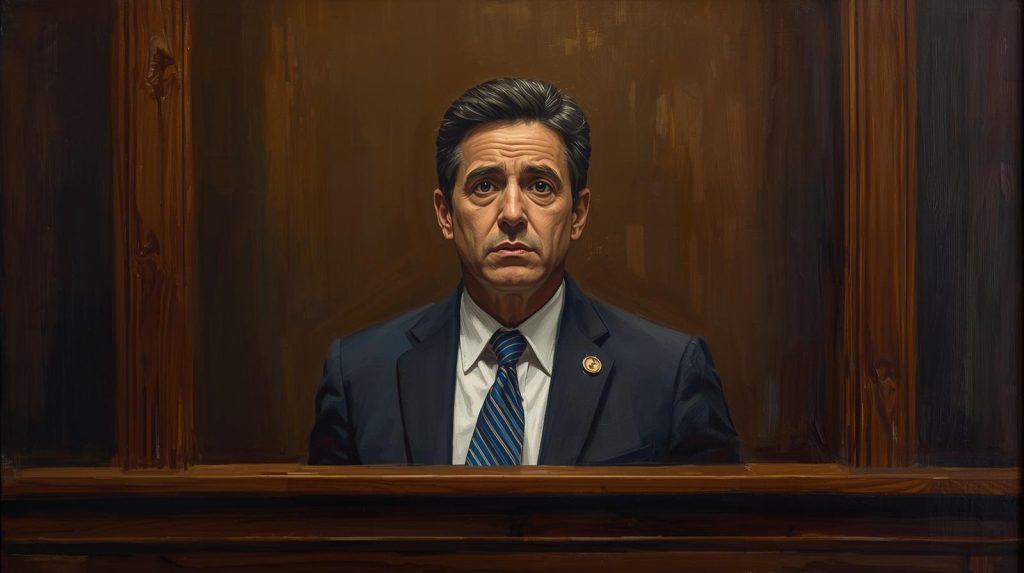If you ever feel like you have faced an uphill battle at the patent office, consider how Bus IP Holdings Pty Ltd must feel.
Enduroco Pty Ltd v Bus IP Holdings Pty Ltd [2025] APO 29 is a final determination decision that follows an earlier opposition decision (Enduroco Pty Ltd v Bus IP Holdings Pty Ltd [2022] APO 74) in which the claims were found to lack support.
Initial decision
Claim 1 is for a system for converting a 2WD vehicle to 4WD and requires, amongst other things:
“a sub-frame for attachment to a chassis of the vehicle for mounting and supporting the independent suspension assembly and the front axle assembly”.
During the initial opposition decision, the opponent (Enduroco) argued the above feature encompassed the direct mounting and supporting of the front axle assembly to the subframe.
The applicant (Bus IP) argued that this feature requires the subframe to be suitable for facilitating mounting and supporting the suspension and front axle assembly.
Both parties agreed that direct mounting of the front axle assembly to the subframe would render the suspension inoperable, with Bus IP arguing that “since such a result is a foolish result, the claim should be construed differently” – that is, in line with their “facilitating” interpretation.
However, the Delegate of the Commissioner decided that the subframe not only encompasses, but is limited to, suitability for direct mounting of the front axle assembly to the subframe, noting “I do not understand how it can be said that a sub-frame suitable for mounting the front axle assembly does not require some means of mounting the sub-frame to the front axle”. It followed that claim 1 lacked support since this was not described in the specification (for obvious reasons – it wouldn’t work).
Amendments and Final Determination
Amendments
Bus IP made some amendments to claim 1 in an attempt to force a different interpretation. This was a challenge given all claim amendments post-acceptance must be narrowing amendments.
Before the Final Determination hearing, the Delegate wrote to the parties to note that despite the amendments, it seemed impossible to resolve the lack of support, given the earlier finding that the claims require the subframe to be suitable for direct mounting of the front axle assembly to the subframe, which could not be removed by way of amendment after acceptance.
In response, Bus IP proposed the following further amendment:
“a sub-frame for attachment to a chassis of the vehicle for mounting and supporting the independent suspension assembly and indirectly the front axle assembly”.
Together with this proposed amendment, Bus IP requested the Delegate reconsider his position. This proved futile – the Delegate noted that “In a final determination, any findings made in the original decision cannot be revisited” and found that the addition of “indirect” would be a broadening amendment in view of the earlier finding that the claims already require direct mounting.
Obvious mistake
Bus IP also presented the alternative argument that there was an obvious mistake in the claims, given both Enduroco and Bus IP had agreed that the Delegate’s interpretation resulted in an inoperable suspension.
Bus IP referred to the test in Holtite Ltd v Jost (Great Britain) Ltd [1979] RPC 81 and quoted:
“In the context of correcting it, the natural meaning of the expression ‘obvious mistake’ is that: what must be obvious is not simply that there has been some mistake but also what the mistake is and what is the correction needed. But the correction needed does not fail to be obvious merely because, as a matter of drafting, there is more than one way of expressing it without affecting its meaning. Furthermore, having regard to the function of the specification as a warning to the public of the limits of the monopoly claimed, the mistake must be apparent on the face of the specification itself to an instructed reader versed in the particular art to which the invention relates.”
In response the Delegate pointed out that the same paragraph in Holtite also says:
“…if the mistake was obvious, it cannot have misled.” (Delegate’s emphasis)
The Delegate ultimately decided there was no obvious mistake, noting:
“Thus, an obvious mistake cannot mislead the reader, as the reader would recognise both the existence of the error and what was intended instead. I found the claims to be clear and to convey a definite meaning.“
and
“Viewed from another perspective, this alternative submission by the applicant is essentially saying that no one reading the claims would conclude that direct mounting was intended, but would naturally arrive at the applicant’s interpretation. But I did conclude that direct mounting was intended… This means that I did not recognise the existence of any error, or its correction; in the terms of Holtite, I was misled.“ (my emphasis)
Unfortunately, there was insufficient expert evidence to show the mistake would have been obvious to “an instructed reader versed in the particular art to which the invention relates”, so it appears the Delegate has focused on what he himself considered obvious.
Conclusion
The best response to the initial decision on construction may have been to appeal to the Federal Court. The amendment option seemed futile. The obvious mistake avenue, with better evidence, may have been the next best option. Of course, having a precautionary divisional application would have come in handy to pursue alternative claims.
In any case, the phrase “for mounting and supporting the independent suspension assembly and the front axle assembly” may have initially appeared uncontroversial and was presumably included to provide some context for where the subframe fits into the overall system, but this is a good reminder to think carefully about unintended interpretations.
About the author:
Joseph is a New Zealand and Australian patent attorney having a particular focus on mechanical engineering, electronics and software-related technology. He provides useful advice on issues such as patentability, freedom to operate (FTO) and infringement. Joseph regularly prepares new patent applications with both a New Zealand and global focus, advises clients through the examination process (patent prosecution) and has significant experience defending patent applications against oppositions by third parties.










